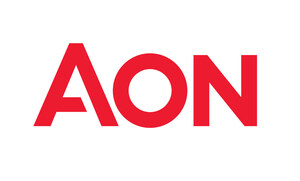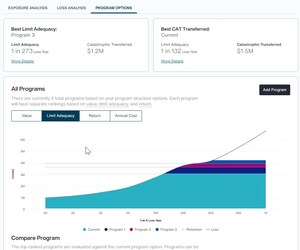LINCOLNSHIRE, Ill., Dec. 4, 2013 /PRNewswire/ -- Determined to help employees improve their financial security at retirement, a growing number of employers are placing greater emphasis on improving and institutionalizing their 401(k) investment lineups to boost participant returns and increase savings levels, according to a new survey by Aon Hewitt, the global talent, retirement, and health solutions business of Aon plc (NYSE: AON).
(Logo: http://photos.prnewswire.com/prnh/20100719/AQ37264LOGO)
Aon Hewitt recently surveyed more than 400 defined contribution plan sponsors, representing over 10 million employees in plans that total $500 billion in retirement assets, to determine their retirement benefits strategies, plan designs, and investment structures. According to the survey, assessing and enhancing investment approaches continues to be a significant focus for the majority of employers.
One primary area of attention is cost. More than three-quarters of employers said they have made efforts to reduce fund or plan expenses in their defined contribution plans over the past two years, compared to just over half in 2007. When asked what methods they used to reduce fees, 62 percent said they switched share classes to lower-cost alternatives, and half said they swapped out funds for lower-cost alternatives. Aon Hewitt's survey showed fees are a top criterion for selecting fund options, with historical investment performance and fund investment process rounding out the top three. In contrast, name recognition and availability in public sources fell to the bottom of the priority list.
"One of the most direct ways to increase participant balances is to increase their returns, which can be done effectively by decreasing investment fees without sacrificing investment quality," said Rob Austin, director of Retirement Research at Aon Hewitt. "Even small changes in 401(k) fees can have a significant impact on employees' nest eggs over time. For example, decreasing fees from 1 percent to 0.75 percent per year has the same effect on a typical participant as contributing an additional 0.50 percent of pay. This ultimately translates into thousands of dollars more in retirement savings."
Increased Use of Institutional Funds
Aon Hewitt's survey showed that the number of companies adding non-mutual fund alternatives—such as collective trusts and separate accounts—in their 401(k) lineups has increased dramatically over the past seven years.
More than 90 percent of employers offered at least one such option in 2013, up from 59 percent in 2007. Forty-four percent utilized these vehicles as their primary fund options in 2013, up from 19 percent in 2007. According to Aon Hewitt, plans with more than $1 billion in assets were more likely to have more than half of their investment options in non-mutual funds than plans with less than $1 billion in assets (61 percent compared to 21 percent).
"Lower-cost institutional funds can substantially benefit participants because their fees are usually 30 to 50 percent lower than retail mutual funds," added Winfield Evens, director of Outsourcing Investment Strategy at Aon Hewitt. "Institutional funds have long been an integral part of defined benefit plans, but have taken longer to become common in defined contribution plans. Additionally, institutional fund fees are typically designed so that the more assets invested by the plan, the lower the expense ratio—which directly benefits participants in the form of higher returns."
Diversified Options
Aon Hewitt's research showed that a growing number of employers are diversifying their 401(k) fund lineups by offering participants access to a wider range of investment options. For example, the percentage of employers offering emerging market funds has doubled in the past two years, from 15 percent in 2011 to 30 percent in 2013. The percentage of plans offering short-term bond funds jumped from 8 percent in 2011 to 14 percent in 2013.
"Broad diversification is one of the core tenets of optimal investing, and specialty sectors provide additional avenues for DC investors to enhance their portfolios and leverage asset classes that have long been employed by institutional investors, such as defined benefit plans and endowments," said Evens.
Employers are also offering index—or passively managed—funds across a growing number of asset classes. "The index approach has been a mainstay among large-cap equity funds, but now we are seeing the passive approach become much more common in other asset classes," added Austin.
According to Aon Hewitt's survey, widespread investment classes that had a large increase in the index approach are mid-cap equity (59 percent in 2013 versus 42 percent in 2011), intermediate bond (53 percent in 2013 versus 42 percent in 2011), and international equity (50 percent in 2013 compared to 31 percent in 2011).
Assessing Equity of Fees across Participants
As plan sponsors assess their investment structures, many include an analysis of recordkeeping fees and how they are charged to participants. Aon Hewitt's survey showed a shift in how employers are charging for these fees—which are paid in full by employees in more than three-quarters of plans.
Today, 26 percent of plans charge recordkeeping fees as a periodic line item to participants, up from 14 percent in 2011. The number of plans assessing recordkeeping expenses via fund-based fees—for example, by using mutual funds with revenue sharing—decreased from 83 percent in 2011 to 52 percent in 2013.
According to Aon Hewitt, charging a flat fee for administrative/recordkeeping fees can have a significant impact on a participant's account balance over time. As an example, when administrative/recordkeeping fees are charged as a $50 flat rate every year, a typical participant with a starting salary of $75,000 ends up having a balance at retirement that is $200,000 more than he or she would if the fees were instead charged as 0.25 percent of assets each year.
"Plan sponsors are discovering there are many cost-effective ways to significantly increase participants' savings through reviewing and improving basic components of the plan," said Austin. "In many cases, relatively minor changes in plan design can greatly benefit plan participants' efforts to improve their retirement future."
Click here to read the report highlights.
Sign up for News Alerts: http://aon.mediaroom.com/index.php?s=58
Follow Aon Hewitt on Twitter: @AonHewitt
About Aon Hewitt
Aon Hewitt empowers organizations and individuals to secure a better future through innovative talent, retirement and health solutions. We advise, design and execute a wide range of solutions that enable clients to cultivate talent to drive organizational and personal performance and growth, navigate retirement risk while providing new levels of financial security, and redefine health solutions for greater choice, affordability and wellness. Aon Hewitt is the global leader in human resource solutions, with over 30,000 professionals in 90 countries serving more than 20,000 clients worldwide. For more information on Aon Hewitt, please visit www.aonhewitt.com.
About Aon
Aon plc (NYSE:AON) is the leading global provider of risk management, insurance and reinsurance brokerage, and human resources solutions and outsourcing services. Through its more than 65,000 colleagues worldwide, Aon unites to empower results for clients in over 120 countries via innovative and effective risk and people solutions and through industry-leading global resources and technical expertise. Aon has been named repeatedly as the world's best broker, best insurance intermediary, reinsurance intermediary, captives manager and best employee benefits consulting firm by multiple industry sources. Visit www.aon.com for more information on Aon and www.aon.com/manchesterunited to learn about Aon's global partnership and shirt sponsorship with Manchester United.
Media Contacts:
MacKenzie Lucas, 847-442-2995, [email protected]
Maurissa Kanter, 847-442-0952, [email protected]
SOURCE Aon plc
WANT YOUR COMPANY'S NEWS FEATURED ON PRNEWSWIRE.COM?
Newsrooms &
Influencers
Digital Media
Outlets
Journalists
Opted In





Share this article